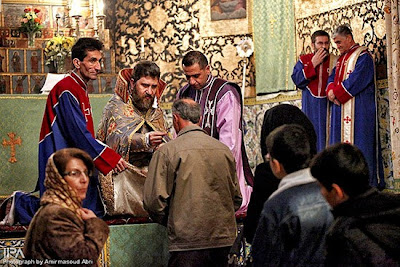In
a post yesterday on his outstanding music blog
On An Overgrown Path, retired recording executive Bob Shingleton (aka 'Pliable') raises an important question:
Do concert recordings make sound sense? Shifting market forces favor the production and commercial release of recordings of public concerts over studio-produced recordings, with many of these 'live' concert recordings coming from new house labels created by orchestras themselves. As Pliable observes,
the movement toward live concert recordings presents some acoustic challenges:
There is no problem per se with concert recordings, other than the acoustic limitation of the venue. Many great recordings have been made at concerts. . . . Occasional audience noise leave the listener in no doubt that these are concert performances, but their greatness is not diminished as a result. The problem, as highlighted by [recording engineer] Tony Faulkner, is the current fashion of making concert recordings sound like studio sessions by technical legerdemain. There is an almost total absence of extraneous noise on the new generation of concert recordings. When have you heard an audience totally silent at a concert? Very rarely I would bet, which means sonic manipulation is being applied as an additional intermediary layer between performer and listener. And that manipulation has been made a lot easier by recent developments in digital technology.
My humble opinion as a listener and collector of classical recordings is that Pliable is right. I say this despite the fact that I tend to prefer live recordings to those produced in the studio. Recordings made at public concerts heard by people other than recording engineers and the musicians themselves often seem more
alive to me even if they lack the technical perfection of the best studio recordings.
In my view, an occasional bit of audience noise shouldn't be regarded as a "flaw" to be removed through digital patching but as a valuable reminder to listeners that a recording is a historical document. In an effort to make live recordings sound "better" by removing as much extraneous noise as possible - including even audience applause at the end of the performance - engineers run the risk of creating a finished product that may sound oddly disembodied.
Writing on this topic, I can't help but think of the first recording I ever purchased of Beethoven's 9th,
an EMI reissue of a famous performance of the work conducted by
Wilhelm Furtwängler at the
Bayreuth Festival in 1951. The sonic quality of this mono recording isn't the very best - even with remastering, it still sounds like a sixty-year-old record - and I can think of other recordings of the same work that I find more satisfying in artistic terms. Still, the circumstances behind this particular recording give it special meaning. The 1951 performance captured here came during the postwar reopening of the Bayreuth Festival, an event seen by many as a symbol of Germany's cultural rebirth following the horrors of Nazism and the devastation of the Second World War; Furtwängler's participation was also a sign of the rehabilitation of a conductor who had faced considerable public criticism for his decision to continue working in Germany throughout the Nazi period despite his opposition to National Socialism.
So what does Furtwängler's 1951 reading of Beethoven's 9th have to do with live recordings made today? Well, this recording includes the kind of sonic flaws which many engineers would today to seek to eliminate even from ostensibly 'live' concert recordings - a variety of coughs, creaks, and other sounds that remind listeners that they are hearing a record of a public performance. Over time, I've come to regard these extraneous noises as calling cards from friendly ghosts - I've listened to the recording in question often enough to anticipate exactly when they will be heard, and I usually smile when I hear them.
I feel as though phantom coughs, throat-clearings and other bits of audience noise captured in live recordings connect me with fellow music-lovers of the past, making us secret sharers of a kind. In short, I find that the imperfections of live recordings allow for a unique sort of intimacy - not simply with the music itself, but with other listeners who have heard the same music in the past. If I had more time, I would say more about other specific recordings that have done this for me, such as
Wolfgang Sawallisch's 1989 reading of Wagner's Ring, which comes complete with stomps, crashes, shrieks, and other noises recorded live on the stage of the
Bavarian State Opera during an actual series of public performances of the
Ring. For now, I hope I've written enough to make my point. AMDG.
















